The title of this article is my combination of a term (post-normal) I learned from Stowe Boyd and a line from Leonard Cohen’s anthem “The Future”
Fundamental innovation in business, education, culture-making and the arts is aimed at catalyzing and supporting cultural transformation. As we face concurrent crises around the globe today, there is a critical need for economic and social innovation. Such innovation requires uprooting and replacing the mental models that currently dominate the governance of our world. By and large these mental models are seen as a ‘legacy system’ that represents the declining relevance and influence of the core assumptions of the 19th and 20th century industrial era.
At the crossroads of massive societal change
Today many parts of what we understand as the infrastructure of our society and it’s core guiding philosophy of capitalism are increasingly seen to be ineffective at best, and plainly damaging, unfair or unjust at worst. Many pundits and experts are now writing and speaking about the present and future implications of living and working in structures that are highly imbalanced .. our society is deeply divided into ‘haves” and have-nots”. This societal division is driven mainly driven by a now-solidly-embedded plutocracy.
Several years ago an article in the Atlantic Monthly argued persuasively that income inequality and economic imbalances posed at least as much threat to the stability of today’s world as climate change. Let’s layer over that other major issues such as global man-made climate change, and the very real possibility that we are gradually entering a post-oil world.
The constellation of conditions we humans now face have been made by the heads, hands and activities of a parade of humans operating under a set of shared mental models, this set having been created during the growth and maturity of the late-stage Industrial Era. Jeremy Rifkin explores this in depth in Chapter 3 (The Courtship of Capitalism and Vertical Integration) and Chapter 4 (Human Nature Through a Capitalist Lens) of his most recent book “The Zero Marginal Cost Society – the Internet of Things, the Collaborative Commons and the Eclipse of Capitalism“.
Collectively, in Canada, in North America and in most parts of the world, we are approaching a fundamental cross-roads pretty rapidly. We have been told for more than 30 years now that the Information Age would require our societies to develop, transition to and inhabit a new societal paradigm. For much of this period, that has seemed true conceptually but many of the key elements of how we live and work have not changed so much.
But, “it takes a long time for change to happen quickly”.
The arrival of the Internet and then the Web are fundamental technological markers of this massive transition. Today it’s clear that they have provided us with the infrastructure and eco-system of tools and capabilities that we will use, for better or worse, to create the new paradigm and ‘populate’ it with new mental models and political, social and economic behaviours.
“First, we shape our tools and structures; then, they shape us.”
(various attributions .. Culkin, McLuhan, Churchill)
M. Cartier
The status quo is beginning to be questioned
Capitalism and ‘post-modern’ democracy are under question. Governance and economic models are under examination as a world of participant-driven initiatives comes into being. The phrase “in perpetual beta” is beginning to appear in a wide range of contexts, and demonstrates growing recognition that what was once perceived as (much more) stable is now seen to be ‘in flow’ and in the process of continual change.
The post-911 world is much more anxious about peoples’ security in public places (airports, business centres, schools, and a wide range of public spaces). The possibilities for demonizing “others” have grown exponentially. At the same time events like the Arab Spring and the appearance of Wikileaks and Anonymous underline the opportunities and threats posed by the increased possibilities of transparence due to massive flows of information in real-time.
What do ‘shared mental models’ have to do with this? This is a central question to the role of human activities and sense-making in any era, of course. Art, music and new models of commerce that become effective and displace existing models disrupt, excite, attract and break frames of reference and existing mental models. This helps and enables people to see new and interesting possibilities with respect to human activities and the human condition. Such activity is the ultimate tool for transforming mental models, and thus the core dynamics of cultures and societies.
As noted, this massive transition has been forecast for 30 years or more. The probabilities and possibilities were foreshadowed, for example, by the emergence of the field of cybernetics pioneered by Norbert Wiener and Stafford Beer. Buckminster Fuller’s visions and concepts are becoming more compelling, and more frequently cited on a regular basis. Interconnecting people with information flows and creative capabilities has opened the doors for moving into the process of deep change that today’s and tomorrow’s conditions will demand of us. Everywhere, it seems, people are increasingly aware that complexity abounds, is growing and affects us all in important and interdependent ways.
Thus, we are all moving from a constellation of ‘complicated’ models into an environment characterized by complexity. Realizing this transition in effective ways demands different core assumptions about why and how human activities are conceived, created and put out into the public space.
Folks .. welcome to the early days of the 21st century !
As Michel Cartier has outlined in clear and simple language in his 2010 book “La Société Émergente du XXIe Siècle” (I was privileged to be co-author), it’s become obvious to more and more people that the need has become critical for …
- a new societal paradigm
- innovations that bring the new paradigm to life, and
- a widespread awareness (and help for many with key issues such as digital literacy) that we are continuously moving deeper and deeper into a “knowledge-based society of participation in key societal decisions”.
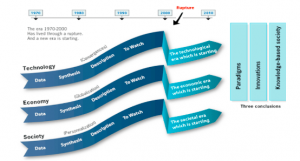
M. Cartier
Awareness of the need for new mental models is spreading
Every week and month that passes, more people are understanding the impacts, the needs and the challenges. Fundamental transitions to environments wherein a true new paradigm has taken root in a sustainable way are always fraught with uncertainty, turbulence, ambiguity and sometimes real chaos. The changes required manifest both new ways of doing things and significant confusion when tried-and-true ways from the previous paradigm stop being effective or their potency dissolves.
“Today, many things indicate that we are going through a transitional period,
when it seems that something is on the way out and something else is painfully
being born.
It is as if something were crumbling, decaying, and exhausting itself–while something else, still
indistinct, were arising from the rubble… ”
Vaclav Havel
The implications are massive, and will continue to be for quite some time. The ongoing impacts of the emergence of this new era will necessitate an enormous amount of ‘unlearning’ of old and rapidly-obsolescing legacy mental models. The push-and-pull between established institutions and centres of power and the rising calls for deep change will continue to play out over the next 20 – 30 years (an estimate).
What’s different this time ?
There have been several important paradigm shifts over the past 300 to 400 years.
Is it different this time?
In some primary ways (in terms of the underlying dynamics of change), probably not. However, there are some significant differences (global population increase, the inertia of Taylorism deeply embedded in most organized aspects of today’s western societies, the emergence, growth and spread of both ICT and the Internet, etc.) that have together pushed or dragged us into conditions that characterize ‘complexity’.
The image below is an ‘extension’ of a diagram created for a 2005 SAT report titled “Digital Capabilities, Digital Culture, Networked Markets: The Time Is Now”. The Internet and Web often have impact not unlike a explosive hollow-point dum-dum bullet fired from a gun. Hitting the target, the bullet ‘explodes’, and the impact on its target becomes multiplied many times over (little hole going in, big hole on the way out).
The interconnected era
Today, with 7 or 8 years or so of social networks and widespread use of social media behind us in our collective experience, we can say with some authority that when digital capabilities and interconnectedness arrive and have impact upon an area of human activity, the impact is virtually always important and serious, if not transformational.
Will this type of impact, and the follow-on activities built with and upon this impact, cease or slow down ? Most or all of the indications suggest “no”. Why is it likely that things won’t slow down or ‘stabilize’ any time soon ?
The infrastructure and phenomenon of interconnectedness combined with easy-to-use tools and ‘informal information spaces’ (G. Lovinck) is really quite new. Arguably this environment is only 15-20 years old for early adopters and less than a decade old for the critical mass of citizens. The pace of innovation and go-to-market dynamics of technological creative tools (which have enabled the massive range of digital capabilities as suggested in the diagram above) has been extraordinary, and seems to be sustainable for the medium-term future. Particularly over the past decade, as a result of Moore’s Law meeting Metcalfe’s Law, complexity theory has slowly and steadily been making its way into the core of various computing capabilities, and augmenting the functionality and applicability of these advances.
In addition, interconnectedness and the possibilities of “Being Digital” (N. Negroponte, 1995) have exposed some very important differences in what happens to our cognition and the way(s) we process and deal with information flows, knowledge, intuition and the ability to create cultural artefacts.
The following diagram offers us a ‘shortcut’ to understanding this emergent and rapidly-growing issue. Michel Cartier, in many ways the francophone world’s answer to Marshall McLuhan and a specialist in the visualization of information, created along with René Barsalo a picture of the tools available to the different generations alive today. As our increasingly electronic, digital and interconnected environment has developed and become quasi-ubiquitous, the uptake of new tools by each subsequent generation alive today has major impact upon the ways people consume, exchange and create information, knowledge and ultimately culture (a system of shared beliefs and understanding).
The younger generations have more tools at their disposal. In many cases they have started using the more recent tools (cell phones, smart devices, laptops and tablet computers) in their early childhood. Researchers like Wim Veen of the Technical University of Delft have been paying attention to the effects of this early adoption on cognition and neuro-plasticity amongst pre-adolescents and adolescents. From the conclusions of the research, they are proposing new models of pedagogy and learning that take into consideration the fundamental changes offered by the combination of information technology, the interconnected Web and smart hardware.
The findings, forecasts and recommendation were summarized a few years ago with the publication of Veen’s book “Homo Zappiens – Learning and Knowledge, the Digital Mindset”. The book suggests that the new models involve building pedagogical activities around the learner, and reflect general trends towards the attraction and clustering of cognitive activities (learning, etc.) focused on the user / participant’s interest, abilities and rhythms of activities.
Beyond the simple penetration of the Web into many or most parts of organized human activities, there are a range of ongoing developmental paths for the technology and infrastructure of the digital interconnected era. The results and dynamics generated by these development paths are very likely to ensure that there is ongoing rapid and turbulent changes to the way people do things .. consume, connect, communicate, cooperate, collaborate, compete and continue working at coping with the massive transition we face.
Outlined below are a few of the main areas where a growing and spreading eco-system of technological advances are having impact and will continue to be built into our societies’ infrastructure of consumption, communication, exchange, collaboration and co-creation (please note: these are just a few of the areas wherein massive change is visiting our daily lives).
- 3D effects become routine, and increasingly immersive reality in various forms will be built into smart television capabilities
- An interesting rise in use of info-graphics to explain complex ideas will continue to grow
- IPTV and time-shifting have been relatively slow on the uptake to date, but are virtually guaranteed to become the infrastructure for television viewing / consumption
- Immersion & immersive reality – there will be significant development of technological capability, but a sociological ‘lag’ in its use .. why use it, what does it serve?
- Telepresence – Skype, G+ Hangout, HD from Cisco for enterprise telepresence
- Sophisticate storage, archiving, file-and-screen sharing capabilities are cheap and approaching ubiquity … examples include Dropbox, GoInstant, Wetransfer, Skype, G+, Fuze, etc.
- Net lag – cultural similarities and differences based on the intersection of almost-instantaneous communications possibilities colliding with the daily rhythms and physical habits of our lives.
The environment in which we work and live .. and make culture .. today
It has only been 20 or so years since the arrival of the browser and the availability of the GUI for users globally, and thus the birth of the Web for general consumer and citizen use. There have been several waves of major impact since then … the dotcom boom, the dotcom bust, the early (and mostly not visible) rise of what was called Web 2.0 (blogging, RSS feeds, early forms of interactive space, etc. Other cheap-and-easy forms of creating cultural material have followed.
However, our current era is characterized by a fascination or obsession with money and commercial activities. The events of the past decade leave no doubt about that. Much of the first wave of technological development has been subsumed into the western world’s existing mental models and culture. An important question is whether this will continue, or whether we will evolve, individually and collectively, towards a model different than late-stage capitalism and commercialism. How will we cope with the range of dynamics and issues that accompany that transition?
In those early and ‘wilder’ days, there was a significant emphasis on “where are the revenues?” and “what is your business model?”. For the most part, such questions drove the development and growth of an interconnected communications infrastructure enabling interactivity, ease of use and the dynamics and outputs of co-creation. A significant part of this evolutionary path was due to the original hype and then massive disappointments of the dotcom boom and bust. This first wave was characterized by perceptions of highly exciting opportunities and the assuredness with which people understood the scope and reach of promised revolutionary new capabilities and opportunities.
Fast forward five+ years to 2005-2006. Facebook and Twitter had just been born, and it was becoming abundantly clear that the only widely-available real revenue / business models for digital application, services and platforms were 1) advertising and 2) membership / subscription. After all, this was the path blazed by Google and Yahoo, becoming world-class giants in a very short period of time. The trailblazing of this early period has changed forever the way(s) in which we search for and use information, knowledge and connections to other capabilities, information and people.
Late-stage capitalism functions mainly on rentier dynamics, seeking to extract maximum revenue flows and profit from established activities whilst ferociously protecting existing structures and dynamics. Google and Yahoo and several others have found the path to established business models and revenues and are seeking to increase their dominance through an ongoing encroachment on our human activities and personal data. And Big Data is barreling down the pipe, so to speak.
And then there have been the phenomena of Wikileaks and the NSA’s insertion in massive form into our lives.
At the same time, there has been a parallel evolution towards the greater presence and impact of the so-called sharing-based economy. This development has engendered much interest and discussion of ‘gift economy’ dynamics and peer-to-peer (P2P) economics. These conversations are still going on, and are growing in important and practical ways. Indeed, now such conversations are increasingly mirrored or unfolding in parallel in mainstream arenas of activity, developed by critics of traditional economics, finance and business development.
This environment with its obsession on money is particularly relevant to us in that it has become more-or-less accepted that todays’ conditions are ‘just the way things are’.
Will we remain mainly unconscious about this ? I’m reminded here of a little-know and short book titled “The Unconscious Civilization” by John Ralston Saul in which he warns us all about our obsession with money and profits, brought to us by creeping corporatism. Thus far, his prognosis seems prescient.
Individually we can try to ignore the sense-surround 24/7 marketing and the myriad of other techniques used to help people hand over money and/or be fearful of not having access to regular flows of money. Most recently, the notion of a vastly different “Future of Work” has sprung to life, heralding much automation and robotisation amongst the florid arguing of techno-utopians and techno-dystopians whilst the average less-informed person generally feels more and more anxious.
More change is on the near horizon
The last three or four years have also seen significant advances in the adoption and usability of mobile and smart devices, collaborative software and customizable-to-the-user web services. SaaS (Software as a service) has become the dominant model for delivering web platforms, web services and web-based capabilities. The concept of ‘the cloud’ threatens to effect another quantum change in how software is configured, delivered and used. Also, the notion of an App-based economy has sprung to life. This concept, driven deeper and wider into society through the explosion in use of the iPad and other touch-screen enabled tablet computers, is making the notion of a post-PC world seem more and more realistic for the general population of casual information technology users.
Beyond the consumer markets, significant experimentation and innovation keeps on coming, from capabilities like Arduino, easy and embedded video streaming, refinement of commercial telepresence services, 3D and immersive virtual reality and new forms of open-source based platforms, applications and services that mimic or surpass the commercial forms of similar capability.
Philosophy and sociology are becoming important again
The explosions of creative technology we have been and are experiencing have spawned a series of sociological responses, in the form(s) of Barcamps, Wordcamps, Govcamps, new cultural and artistic festivals with technology-and-culture-making themes, maker-faires and other similar events and happenings.
The impetus behind this explosion is philosophical, technological and sociological. People are searching for for meaning and for ways to find others with similar interests and motivations so that they can engage in activities that help them learn, find work, grow capabilities and skills, and tackle vexing social and economic problems. And as awareness spreads and experience grows, more and more of these types of events and purposeful gatherings occur. Thus, the “get informed and take action” aspects of general culture are strengthened and reinforced, leading to yet more of these types of activities. Today, our culture-making activities are well engaged in the early stages of cultural mutation.
Here’s an example of how the possibilities, intentions and dynamics are being combined into new forms:
Fast Company, Nov. ’12
Shorter and faster cycles – “Smart” and Internet everywhere in our lives ?
Shorter cycle-based development and release of software and web services incorporating the latest user-and-market feedback characterize our environment today. Known as Agile development and Agile programming, this approach is having a rapidly-growing impact on how software applications, functionality and platforms are being developed. Focusing on and involving the participation of users with respect to their needs and ways of using software is an important signal or development. It is clear evidence that the developmental and learning dynamics generated by continuous or regular feedback loops are necessary and will need to become the norm in areas of activity in which change and short cycles of product development are constants .. which is increasingly most areas of human activity in the developed world.
The Internet of Things (IoT) is a concept that has come to signify the implementation of intelligent sensors and software into objects that we find and use in daily life … clothes, homes, cars, buildings, roads, and a wide range of other objects that have a place in peoples’ daily life activities. This arena of concentration is experiencing major growth, equally in terms of hardware, software and with respect to the way the capabilities are configured and used. The implications for the uptake of the IoT and the sociological changes the uptake fosters are being explored and examined in media and network culture research centres, universities and think tanks in many societies.
The IoT concept is being combined with the new-ish concepts of Open Data and Big Data, and plays directly into the imagining of Smart Cities / Intelligent Cities. Many of the issues are known and understood, but carry the weight of necessary political and policy decisions with regard to the presence of intelligent-and-connected objects and activities in our daily modern urban life.
The implications go beyond the tools and the political and economic effects of their use. Rob van Kranenburg, the author of “The Internet of Things” and colleague Christian Nold, recently published a document in which they discuss the future implications and ramifications of deploying the IoT. The more recent document is titled “The Internet of People for a Post-Oil World”.
In this document they clarify that the key opportunities associated with widespread uptake of the IoT are derived from the impact upon peoples’ activities and lives. It is expected that the proliferation of the IoT will introduce significant challenges, particularly with respect to dissembling the dominant mental model of commercializing the use of technologies and consumption of products and services generated thereby. Therefore, they posit, we had better involve people in asking the appropriate questions about why, what, how, when and to do what with the IoT.
- Issue for people everywhere: reclaim a politics of technology that is based on the struggle over the terms of their own participation.
- Needed: a public debate and tangible design interventions that challenge the need for commercial tools
- People from all walks of life have to be at the table when we talk about alternate uses of ubiquitous computing
We suggest an IoT as a non-commercial refuge … as an umbrella of emerging technologies
that do not only serve capital but also facilitate grassroots survival networks in a world faced
with ecological and social devastation.
Nold & van Kranenburg
Whether or not these emergent issues become partly or fully commercialized, or whether they remain mainly in the domain of unfunded or grass-roots initiatives, it’s increasingly clear ‘we’ are on our way towards more integrated eco-systems of issues, people and technologies.
Participation and inclusion – democratic principles versus enclosure and privatization
And in these new sets of conditions, participation and inclusion enabled by interconnectedness are quickly becoming the ‘new rules’.
In the new era of the Web of Things, if you want to build a better mousetrap,
you’ll need to ask the mouse.
B. van Lamoen
Significant transformations and mutations demand new and effective principles and guidelines. Many are seeking to articulate the outlines and ‘rules’ of our new environment. However, it seems clearer by the day that new principles are emerging that can help guide us, individually and collectively, towards our preferred future.
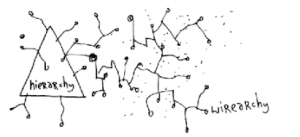
J. Husband & H. Macleod
The concept of wirearchy (other terms also have been used to describe the elements and dynamics of emergent network principles and guidelines) has been applied to offer insight into the manifest implications of this new environment. Today, more and more people confirm seeing these principles in action in a range of important ways.
Wirearchy – a dynamic two-way flow of power and authority based on knowledge,
trust, credibility and a focus on results, enabled by interconnected people and technology.
Jon Husband (1999)
More and more of the emergent activities associated with communities of people and interest coming together to engage around a problem, issue or opportunity contain the elements of wirearchy (knowledge, trust, credibility and a focus on results) at the core of the initiative. Prominent examples include the role of social media and smart mobile devices in the uprisings in Egypt, Libya and elsewhere in the Middle East, or the shocks to our traditional power structures administered by the appearance on the scene of Wikileaks, with its bias towards transparency that menaces established government dynamics. Alvin Toffler foresaw much of this in the 1990 book “PowerShift – knowledge, wealth and violence at the edge of the 21st Century” .. today this shift is indeed underway. Where will the shift will take us is an interesting (and still open) question.
To underpin and support that transition, it is becoming more and more useful to look at the utility of the principles of a domain that began emerging in the 1960’s, in the very early stages of the growth and development of what we know today as our modern society. That domain is organizational development (OD), the roots of which are in humanistic psychology and sociology. It is a domain that emerged as a counter-balance to the mechanistic and machine-metaphor-based core assumptions about the organized activities in our society.
These organizational development principles are built upon some basic assumptions about human motivations, engagement and activities. Perhaps the clearest enunciation of these principles applied generically to organized activities can be found in the six pillars of a philosophical approach aimed at democratizing the workplace called Participative Work Design, created in the 1960’s by Fred Emery (Australia) and Eric Trist (UK, US and Canada).
Participative Work Design – The Six Criteria
- Adequate elbow room – also known generically as ’empowerment’
- Continuous learning – an obvious must
- An optimal level of variety – conscious avoidance of boredom or meaningless repetition
- Mutual support and respect – reciprocating, giving and getting help
- Meaningfulness – a clear sense that what one is doing is useful and aligned with personal values to an appropriate degree
- A desirable future – people don’t want to invest time and energy in dead-end work, obviously
Combined with these humanistic principles of organizational development, leading organizational complexity theorists have in recent years created models that help clarify how to evaluate and respond to the continuous turbulence and ambiguity generated by participating in interconnected flows of information.
Confronting and navigating complexity
To date we have by and large existed and responded to conditions and contexts characterized by either Simple (Known), Complicated (Knowable), Complex or Chaotic dynamics (from complexity theory fundamentals). Increasingly, Complexity is emerging as a key definer of the issues, problems and opportunities faced by our societies.
Dave Snowden, ex-founder of the IBM Centre for Organizational Complexity, has over the past decade created and refined the Cynefin model for assessing and responding to these new challenges. It offers a well-synthesized and coherent framework for evaluating issues and conditions and then making decisions and taking appropriate action(s).
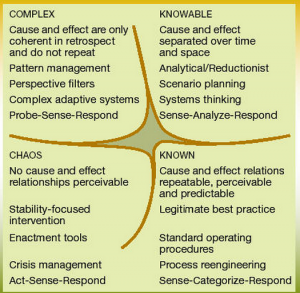
Cynefin Framework, D. Snowden
A growing practical response to these conditions can be seen more and more frequently. Arguably, Occupy Wall Street was an early attempt to bring some global coherence to the power of peer-to-peer connection and conviction in the face of oppressive oligarchy / plutocracy.
Another useful example is offered by burgeoning peer-to-peer movement(s) unfolding around the world. And the proliferation of cultural festivals and events and happenings at salons, forums, galleries and other venues is important. These events and happenings are where people gather to view, wonder, communicate and explore the infinite ways art and culture stimulate reflection, attraction and the opening of minds and hearts.
People everywhere are seeing and feeling the loss of parts of their lives to the ‘enclosure’ of privatization and the diminishment of the commons (the public spaces where certain types of common services and goods are made available to the public). This process of enclosure has been evolving under late-stage capitalism, but/and the calls for reforming or renovating capitalism’s core concepts are growing more frequent and more urgent.
Guess what ?
In the end it is going to be “up to all of us”.
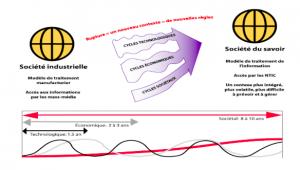
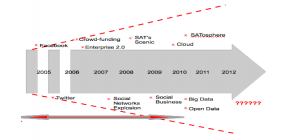
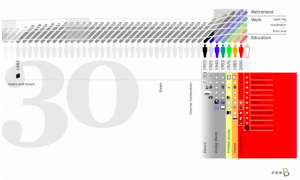
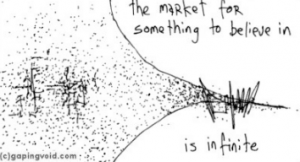
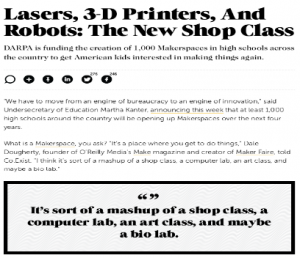
Laisser un commentaire